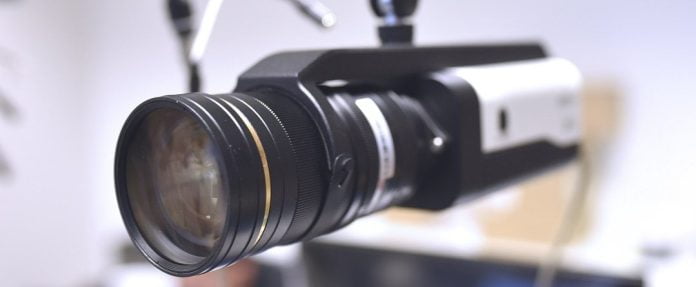What’s the perfect aperture setting for a 2.8mm wide angle CCTV camera lens with a 30m depth of field allowing maximum face recognition throughout the scene over a 24-hour period?
A: There isn’t a ‘perfect’ fixed aperture setting for a 2.8mm CCTV lens expected to cover a wide-ish view with a DoF of 30m with variations from say, 85,000 to 5 lux or less. For a start, the sweet spot of a lens – the point at which a narrower aperture gives the highest MTF and sharpness – is never going to be wide open. The sweet spot will be found stopped down 1 or 2 stops.
The best aperture setting for low light is going to be the smallest number (the biggest physical aperture). Let’s say it’s f1.2. But the best aperture setting for increased depth of field will be the largest possible number (the smallest physical aperture), which might be f5.6 for a CCTV lens. At f1.2 around 14 per cent of the light passing into a lens might reach the sensor, whereas only 0.625 per cent of this light will reach the sensor at f5.6.
Bigger apertures can tend to give shallower depths of field, especially if focused on the foreground, though this issue is less of a concern with auto-iris CCTV cameras/lenses, which are able to adjust automatically to give best overall performance based on available light. They can also generate flare, blooming and smearing if there are strong moving light sources in the scene. In good light, a very fast lens might experience veiling flare, while in lower light levels it might generate saggital coma.
So, should you use the fastest lens you can buy? These lenses are large, heavy, expensive and they may include characteristics that diminish image quality in CCTV applications. There will be applications that suit them but in most cases moderately fast lenses with a maximim aperture around F1.6 will be fine. Having said this, you should buy the best quality lenses – they make a real difference to camera performance.
To assess the best settings for a given site you need to sit down in front of a monitor and play with aperture and focus in real time until you arrive at a level of performance that looks better than the performance offered by other settings you try. Something worth looking at is VMS software that offers the ability to adjust camera settings for night and day allowing you to tweak settings like ISO to improve sensitivity after dark.
None of this takes into account the idea of getting face recognition with a wide-angle lens at depths of field up to 30m. For accurate face recognition, a human figure has to be about half the height of the viewing monitor. What that means is that using a 2.8mm focal length on a 1/3-inch camera, the person needs to be standing 2.5 metres from the lens in good light. To get face recognition at 30 metres you need a 35mm lens, giving you a field of view of only 8 degrees.
To make the right choice, you need to consider DORI numbers and factor in pixel counts – there are calculators to help with this. But they won’t tell you how your camera of choice is going to handle challenging light in the real world. Some camera engines are poorer than others when it comes to handling movement in low light.
We’d be thinking about multiple cameras set to handle different depths of field supported by IR or white LEDs, or covering all the entry/exit points to the space you are defending if it’s recognition you are after rather than situational awareness.
#sen.news









